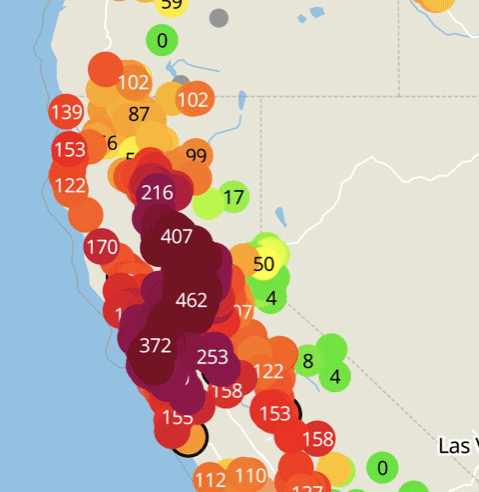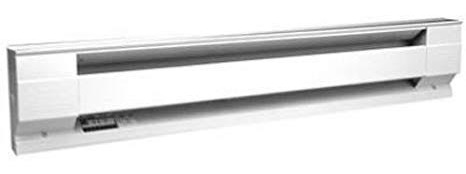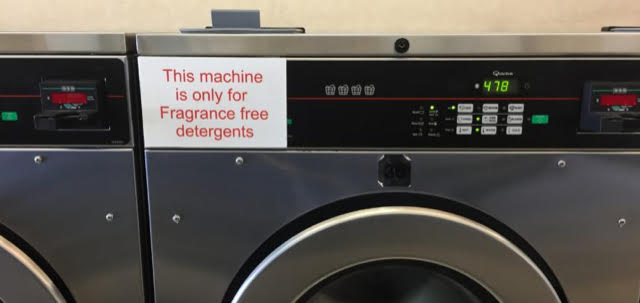
Submitted questions will be posted with my response by the following Tuesday or before.
Submitted comments will be moderated and approved within 24 hours.
Shopping for Pumpkin Pie + 6 of my favorite ways to celebrate pumpkin
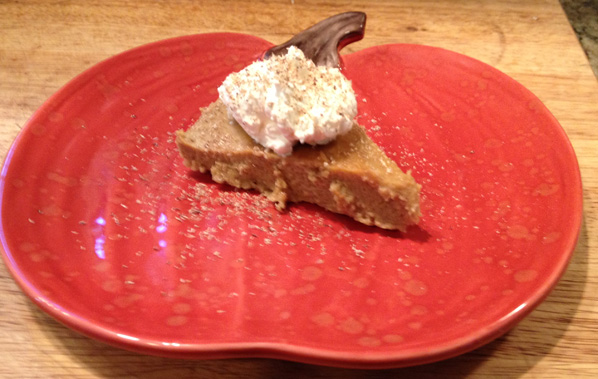
Last night Larry and I went shopping for a pumpkin pie.
Usually I make something pumpkin, but this year I’m so immersed in working on my new website that it was enough to make the organic turkey and and gluten-free cornbread stuffing and yams and cranberry sauce sweetened with local apples and green bean casserole. So I thought we could just buy a pumpkin pie this year. And I’m living with Larry’s family at the moment, so want to make a Thanksgiving dinner that will be familiar to them.
So we went to Whole Foods because I thought they might have house-baked pumpkin pies, but they didn’t. They had two brands of packaged pies. One was not even organic and had a lot of additives that don’t belong in pumpkin pie. The other was gluten-free and vegan and the second ingredient was tofu, so that was not an option for me because I don’t eat soy. Plus it was $20 for a smaller-than-usual pie.
We actually ended up purchasing a huge pie made with organic pumpkin from Costco, which seems to carry more and more organic food every day. Eleven-inch pie for only $7.99. And none of the additives found in the Whole Foods pie.
Times are changing. Whole Foods is no longer Whole Foods. Their basic operating principles are gone.
Next year I’ll go back to baking my own, but it was interesting to see what is going on in the world of pumpkin pie.
Here are some recipes I’ve shared in the past for pumpkin. I highly recommend the Pumpkin Pie for Everyone if you want something close to the standard pie, but try some of the others too. All yummy.

Pumpkin Pie for Everyone
The ingredients are so simple, practically everyone can eat it. There’s no crust (though you could add one if you want) so there are no grains, and there is no sweetener of any kind (though it tastes remarkably sweet!). And it’s so delicious you won’t miss the usually-soggy crust or the sugar. It’s my favorite pumpkin pie ever! RECIPE >>>
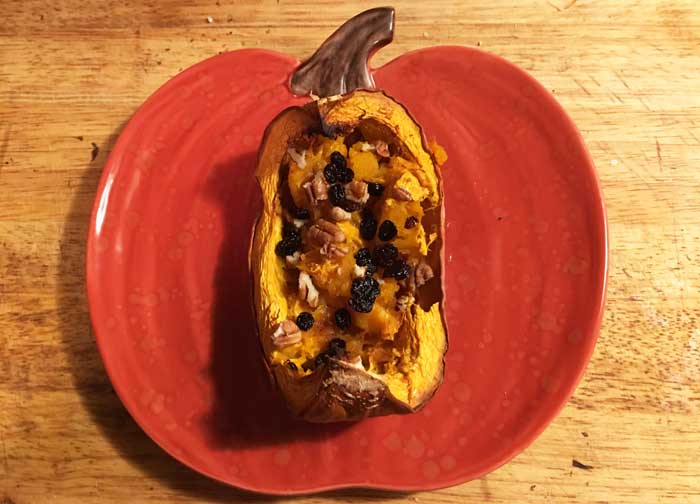
Twice Baked Pumpkin
You probably know twice baked potatoes…I roasted the pumpkin, fluffed up the roasted pumpkin with a fork in its shell, added butter and molasses, and some toppings, and baked it again. The result was “awesome”, according to my taste testers. Both preferred this to pumpkin pie and so did I. You get to see the pumpkin in its natural shell and natural state, not pureed, but as nature made it. A wonderful celebration! RECIPE >>>
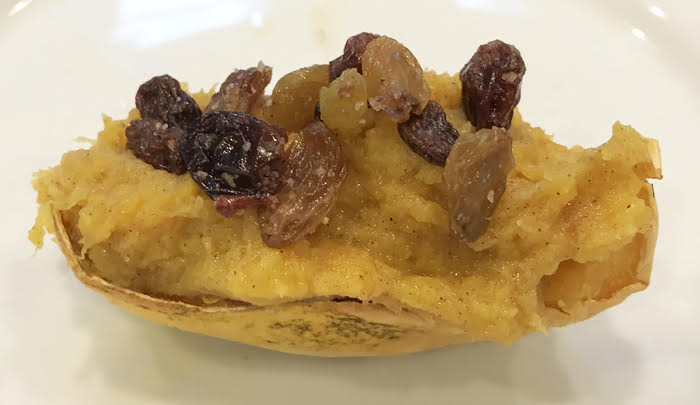
Twiced-Baked ”Pumpkin Pie”
This tastes like pumpkin pie but is made with a very sweet little squash called “Sweet Dumpling.” If you can find this squash where you live, it’s the best squash. It’s very smooth and creamy and SWEET. So no added sweetener of any kind is needed. RECIPE >>>
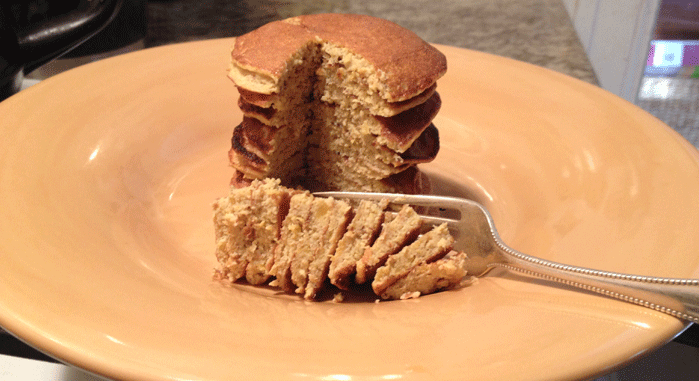
Amazing Pumpkin Pancakes
If you’ve roasted a pumpkin for pie and have some pumpkin puree left over, make these pancakes for breakfast. It’s a real pancake made only with pumpkin, eggs and spices, but it has the texture of a pancake and tastes like a pancake. RECIPE >>>
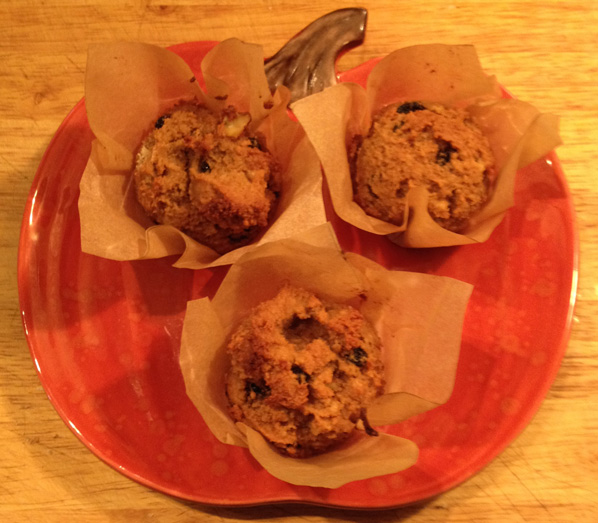
Pumpkin Muffins
These low-carb, gluten-free muffins are moist, delicious, and easy to make. Almond flour instead of wheat flour gives them extra protein. RECIPE >>>
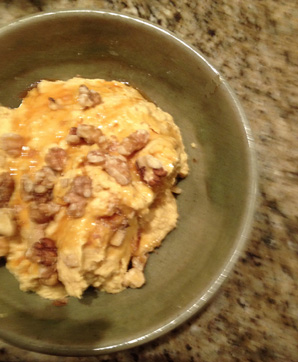
Pumpkin Hummus
Had some roasted carnival squash and cooked garbanzo beans, and thought I would try the two together. Delicious! Autumn in a bowl. RECIPE >>>
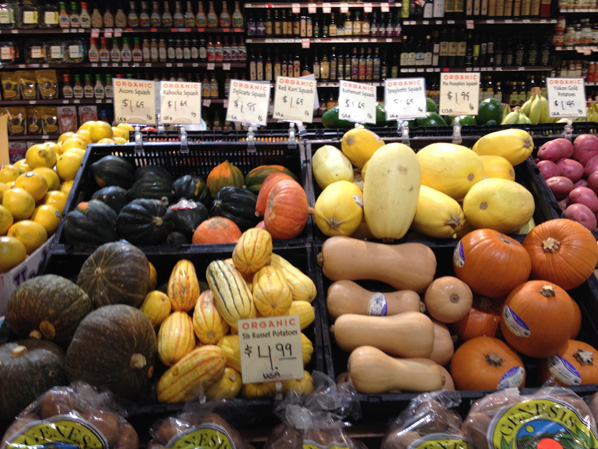
How to Roast A Pumpkin . . . And Other Winter Squashes
Please use real roasted pumpkin in these recipes—not canned pumpkin. It’s easy to roast a pumpkin or any winter squash! RECIPE >>>
Oxford Dictionary Word of the Year is…TOXIC

Well! The world is catching up with me. After forty years of talking about things toxic…the Oxford English Dictionary chose “toxic” as the Word of the Year!
The Oxford Word of the Year is a word or expression that is judged to reflect the ethos, mood, or preoccupations of the passing year, and have lasting potential as a term of cultural significance.
There was a 45% rise in the number of times the word was looked up on the Oxford Dictionary website.
Read more about the word and how the idea of “toxic” is permeating our world here:
San Francisco “Worst Air Quality in the World” Yesterday
You may have heard in the news yesterday or this morning that San Francisco had the worst air quality in the world.
So I just wanted to let you know I’m OK and what is was like here.
Yesterday was day 9 of smoky skies. Larry and I had been staying pretty much indoors for a week and decided to go out to lunch. It seemed in the morning that the sky was clearer than it had been.
But as we were driving around for several hours, I kept saying, “you know, it looks like the smoke is getting worse.” Until finally we both were not feeling well, so we came home to the news that the air quality here was now worst in the world.
There is something called the Air Quality Index that rates how polluted the air is.
We were in the HAZARDOUS range.
Here’s our local San Francisco Bay Area map:
We just stayed in our bedroom with the door closed and turned up our EnviroKlenz air filter the highest setting. We were so relieved to have this filter.
For the past forty years I have made a point to always live where there is clean air. So I can go outdoors anytime I want and be able to breathe. This past week and especially yesterday I haven’t had that option because the air outdoors was worse than the air indoors.
But the EnviroKlenz Mobile air filter did it’s job. We were protected, I slept well, and this morning I’m feeling fine and up working. It’s still smoky outside, but here next to the filter, I can breathe.
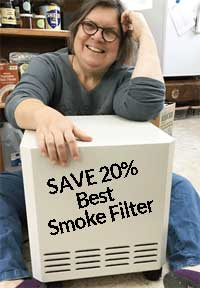 The air quality is down to UNHEALTHY this morning, here.
The air quality is down to UNHEALTHY this morning, here.
But this is exactly why I think everyone needs an air filter. And one that removes both particles and gasses. If I didn’t already have this air filter, yesterday I would have really wished I had it.
[This morning I’ve been here in my office writing without the air filter for about two hours. After sleeping in the bedroom with it overnight I was feeling really good. Now after two hours of being indoors without the air filter my lungs are irritated and it’s getting hard to breathe. My eyes are burning, I have a headache, getting tired and sleepy…I’m going to the bedroom now to get the air filter and bring it to my office. I really need two air filters, one for each room.]
I’ve arranged a 20% discount on EnviroKlenz Mobile air filters for you, through Tuesday.
Why Buy Organic Turkey
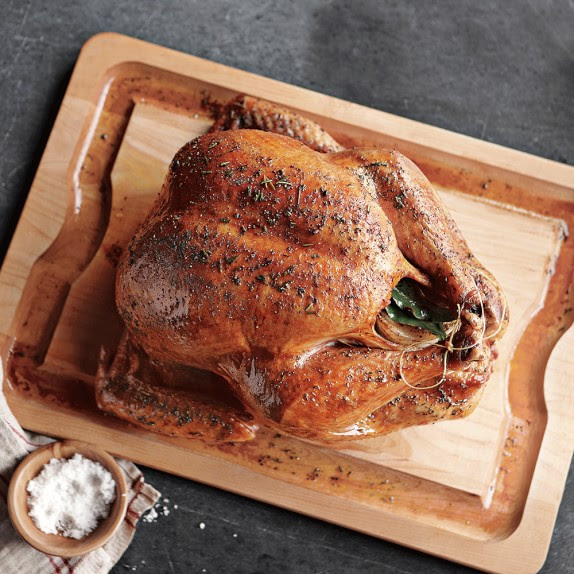
Willie Birds Organic Turkey was the choice of gourmet food purveyor Williams-Sonoma this year. And my choice for my Thanksgiving dinner.
Last week I wrote a post about choosing my Thanksgiving turkey.
This week I want to give you more information I just received from the Organic Consumers Association about why you shouldn’t buy the standard supermarket turkey.
I did make a decision about my turkey.
I chose a local organic Willie Birds turkey, which was the choice of Williams-Sonoma this year. In their catalog, these turkeys are about $10/pound + shipping. I ordered one down the street from where I live for $2.49 a pound. Same turkey.
Here’s more information about turkeys:
ORGANIC CONSUMERS ASSOCIATION:What Turkey Producers Don’t Want You to Know
Thanksgiving Turkey 2018
Last year I wrote a long post about all the different choices we have for Thanksgiving turkeys.
After doing this research I decided to purchase a locally-grown heritage turkey from a 4H project and wrote about that experience as well at My Thanksgiving Organic Heritage Turkey—A Shining Example of a Toxic Free Product.
This year I am considering my choices yet again.
Again, here where I live I can purchase a fresh heritage turkey and organic and, of course, conventional turkeys.
This year I’m on the fence between buying another heritage turkey or buying an organic turkey.
Here’s what I’m thinking.
Last year I wanted the experience of a heritage turkey. I was willing to spend $9 a pound for that experience. But I didn’t know what the turkey would be like, and I didn’t want to deprive my family of the usual turkey experience they were expecting, so we actually had two turkeys.
An organic turkey is half the price and it’s organic, but it’s what is called a “broad-breasted white”—a hybrid breed that have been created to produce a lot of breast meat. This year I’ve been eating a lot more heirloom and heritage foods so the thought of eating a hybrid turkey seems much less appealing to me.
But stil, it’s better than a conventional turkey. It’s organic.
My choices for organic here are to buy one of two brands:
- Willie Bird Organic is our very local brand. In fact, they are almost in my back yard. They were one of the first companies to go natural with their turkeys years ago. Their organic birds are limited and local and not on their website. But my the butcher at my local independent grocery offered to order one for me when I asked. Willie Bird Organic Turkeys are being shipped by Williams-Sonoma this year.
- Mary’s Organic Turkeys are being sold by my local organic food co-op. This brand is very highly regarded in my town and sold at all the best places. On their website you can order a conventional turkey, a free-range turkey, an organic turkey or a heritage turkey. Again these are very local and you can’t order delivered-to-your-door, but check out their website and see how they are raising their turkeys and look for something similar in your local area.
I haven’t decided yet which turkey I’m going to choose, but I have to show you my dream turkey. My favorite restaurant—SHED in Healdsburg, California— is offering these turkeys for special order, starting at about $200.
They are from Good Shepherd Poultry Ranch in Kansas. They DO ship turkeys, chickens, ducks, and geese. The primo primo primo restaurants here serve these birds, Naturally bred, sustainably raised, and humanely harvested. Again check their website and see what they are doing and look for local. They are the oldest continuous strain of standard-bred heritage birds in North America.
See more turkeys on the Meat & Poultry page of Debra’s List.
New Study Shows Organic Food Really Does Reduce Risk of Cancer

There are many lists on the internet about why you should choose organic food. They say things like
- No synthetic pesticides
- No GMOs
- No herbicides like glyphosate
- No sewage sludge fertilizer
- No obesogens that can make you fat
And more.
But now there is a new study from France in which a team of researchers evaluated the diets of almost 70,000 adult volunteers over a period of several years.
The volunteers were categorized into four groups based on how often they consumed organic foods, including fruits, vegetables, meat, fish, cooking oils. Even processed food was included.
The researchers collected data for several years. Then they made note of those who did and did not develop cancer. The results were dramatic.
Volunteers who reported eating the most organic food were 25% less likely to be diagnosed with cancer. The greatest reductions of risk were seen in post-menopausal breast cancer and non-Hodgkin’s lymphoma.
I agree this is a likely outcome. A basic law of toxicology is “no poison, no poisoning.” That sounds obvious but people don’t seem to understand that eating or drinking or breathing poisons that cause cancer are likely to result in cancer. Thus people smoke even though there is a warning label on the package.
I go out of my way and spend more money to eat the best local, seasonal, fresh organic food. I just ate yummy organic roasted carrots from my farm market and just made the rounds this morning to find out who’s selling organic turkeys for Thanksgiving.
Organic is worth it. 70,000 French citizens just proved it.
Portable Heaters with Metal Housings
I originally wrote this post in 2010. Not much has changed since then in terms of types of heaters, but I’ve updated it to bring the links to products up to date.
Readers, I’d love to have some comments with the brands of heaters you are using and like.
I had someone ask this week about portable heaters. I had written that I have a “ceramic heater” with a metal housing and she didn’t know what a ceramic heater was, or what to look for. So I’m going to give you a little review here of different types of portable heaters that come with metal housings, including pictures, so you know what your options are.
First, though, I want to say that with any portable heater with a metal housing, there will likely be an initial odor from the finish that is not fully cured. These finishes are heat cured during manufacture, but there can be residual outgassing as the finish is dry to the touch, but not fully cured. Once the finish is fully outgassed, you can use these heaters with no problem.
About outgassing heaters…From reading your comments, I see that some of you are not outgassing them long enough. It requires a lot more than a few hours. I gave mine to a friend to use all winter. Others have just run the heater outdoors or in the garage. How long you need to outgas the heater depends on the model and even within specific models there are differences. Just heat it until it doesn’t smell any more. But for some types of heaters we’re talking about 100 hours or more of heat before the smell goes away.
You can buy some of these heaters used, like on eBay or try your local Craig’s List. A used heater will already be gassed out and you’ll save money too.
You may not be able to find a heater on your local store shelves that does not smell initially. But if you bake it out, the smell will eventually burn off and you will have a good serviceable heater. There are some heaters you can buy online that are unfinished.
Ceramic “utility” heaters
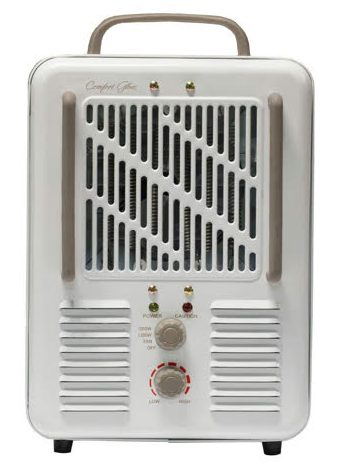 I have two ceramic heaters with metal housings that I purchased more than ten years ago. But I have not been able to find them recently in stores. They are still working now, twenty years later.
I have two ceramic heaters with metal housings that I purchased more than ten years ago. But I have not been able to find them recently in stores. They are still working now, twenty years later.
I’ve noticed now that the ceramic heaters in metal casings are called “utility heaters.” Here are some that say “all metal construction” in their description.
There are a lot more. The way I found these was I did a Google search on “utility heater” and it gave me Goggle search results for utility heater. I just started clicking and reading descriptions. Sometimes I had to read descriptions from several different vendors to find out they had metal housings.I’ve found this year that if the housing is metal, they say so in the description. If it doesn’t say metal and look further into the Q&A, it always says plastic if someone asks. So look for “metal” or “steel” in the description.
These utility heaters are the least expensive heating option, around $40. They are not beautiful [although the 2018 models are getting more stylish], but they will heat your room.
My experience with buying this type of heater is that they don’t have much odor right out of the box, You might need to run it a day or two to burn offf any odor, but it hasn’t been a problem for me.
Radiator heaters
 These are oil-filled heaters that look like old radiators. The oil is completely sealed in and should not leak. I have one and it works very well to heat up one room. And it’s totally silent. Has no fan.
These are oil-filled heaters that look like old radiators. The oil is completely sealed in and should not leak. I have one and it works very well to heat up one room. And it’s totally silent. Has no fan.
This type of heater is notoriously bad about outgassing. This is the one that requred an entire winter to outgas, But once I outgassed it, it’s been a great, reliable heater for more than twenty years. It was worth the effort.
These are made by many different brands.
Baseboard heaters
Baseboard heaters are filled with water or other substances.
One reader wrote that she moved into an apartment with 50-year-old baseboard hot water/oil heaters that also contained glycol, which was leaking. She and her cat got very sick. So that’s something to watch out for.
Another reader wrote that she installed Cadet Soft Heat baseboard heaters throughout her house and there is no odor. I just looked at their website again and they also have wall heaters and garage heaters which look to have metal housings, but they don’t say in the description. So this is something to check if their products interest you. The baseboard heaters have metal housings.
Infrared Radiant Heaters
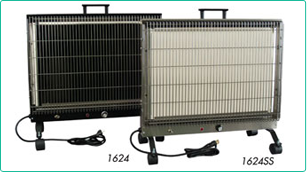 The heat produced by infrared heaters and the heat produced by the sun are very much alike. The heat we feel on our planet is infrared heat produced by the sun. In contrast to most heaters, Infrared heaters do not heat the air in the area and do not cause circulation of the warm air–instead, they heat objects directly. The rays produced by an infrared heater penetrate the skin and warm your body beneath the skin.
The heat produced by infrared heaters and the heat produced by the sun are very much alike. The heat we feel on our planet is infrared heat produced by the sun. In contrast to most heaters, Infrared heaters do not heat the air in the area and do not cause circulation of the warm air–instead, they heat objects directly. The rays produced by an infrared heater penetrate the skin and warm your body beneath the skin.
They are the heat source for far-infrared saunas.
A reader recommended radiant heaters from Radiant Electric Heat. They have stainless steel models “which produces no chemicals, dust particles, odors or fumes.” Their portable stainless steel model has no finish—just stainless steel. The company is experienced working with people with MCS.
- StainlessSteel model s DME Certified
- Non-allergenic, perfect for chemically sensitive or people with acute allergy or sinus conditions
- Built-in thermostat for accurate control of your comfort
- Internal tip-over switch for your safety
- Silent – Clean – Odorless – Economical – Reliable
Warm Your Body Instead of Your Home
I can’t pass up this opportunity to remind everyone that you can save a lot on your heating bills by warming your body instead of the air around you. It takes a lot more energy to warm the air in a room than it does to warm your body. Many body warmers need no energy at all!
- Put on a sweater or scarf or even a wool vest. In the winter I wear flannel shirts with tank tops underneath, sweatshirts, sweaters scarves, wool sock. Long underwear is great!
- Drink hot liquids. Skip the hot chocolate and find herbal teas that you like that you can sip all day, or vegetable soup or bone broth.
- Snuggle with a loved one under a blanket. Body heat is great!
Fragrance-Free Laundromats in San Francisco
Here’s a great idea whose time has come: fragrance-free laundromats!
The link below goes to a post on a blog for an acne clinic. Their concern is acne, not fragrance in general, but since fragrance on clothing from scent in detergent causes acne, they’re on board to live fragrance-free.
“laundry detergent is a major factor in the acne-safe lifestyle. so while we all are making the effort to purchase acne-safe detergent, the cloggy residues from prior machine users can still be getting on our clothes. frustrating!”
SKIN SALVATION: Fragrance-free Laundromats in the San Francisco Bay Area
Home Iron

While I was looking for an image of a woman’s hands ironing I was struck by how many paintings of women ironing exist, going back a good 100 years. So here’s a bit of art to elevate the act of ironing.
I’m moving this post up to present time (originally published 17 March 2008) because there is a new related question and I wanted to include these comments.
One of the commenters decided not to purchase a new Rowenta iron for the reasons stated in her comment. And she’d like to know what other brands of home irons you all are using and recommend.
So readers, over to you. What do you use for an iron? I’m still using my old Rowenta.
Question from bebe
Is there a specific type or brand of iron you recommend?
Debra’s Answer
The only recommendation I have for irons from a toxicity viewpoint is to stay away from nonstick finishes. Get an iron with a shiny finish and you’ll have no problems.
That said, I personally have a Rowenta iron, which costs more, but it’s a lot heavier, which means it’s easier to iron, because YOU don’t have to press as hard. I’ve had it for years–longer than my husband, so that’s more than 20 years–and it’s still working great.
Because I’m in San Francisco for three months, I just bought a cheap $20 Black & Decker steam iron at Target because I didn’t want to risk losing or breaking my Rowenta in transit. It has a shiny bottom too, but is not as heavy.
New IKEA MAUSUND MATTRESSS
Question from Concerned Mom
Hi Debra,
I noticed that Ikea recently came out with a new latex/cotton/wool mattress called Mausund. We are preparing to move to Europe and will need to buy mattresses for our three young children and this mattress is available there. It appears as though the materials in the US and EU version of the mattress are similar. Would this be a ‘safer’ option for my young kids to sleep on (ages 3, 6 and 9)? No one has any diagnosed allergies or sensitivities, I simply don’t want them sleeping on mattresses that off gas harmful chemicals. The price of the mattress in the EU is more reasonable than here, making it within our budget. Thanks.
Debra’s Answer
Well this is an improvement for IKEA but the materials list doesn’t quite match the description.
The first thing you read on the MAUSUND page is
“You’re right to be fussy about what you sleep on. Natural materials like natural latex, coconut fiber, cotton and wool provide comfort and pull away moisture. This makes for a pleasant sleeping environment with a cool and even sleep temperature.”
But when you click on the “Materials and environment” tap, here’s what it says about what the mattress is really made from:
Ticking/ Ticking/ Lining: 100 % cotton
Filling: Wool wadding
Ticking, side/ Piping/ Handles/ Total composition: 53 % linen, 47 % viscose/rayon
Comfort material: 85 % natural/ 15 % synthetic latexAt least 50% (weight) of this product is made from renewable materials.
Product possible to recycle or use for energy recovery, if available in your community.
All the cotton in our products comes from more sustainable sources. This means that the cotton is either recycled, or grown with less water, less fertilizers and less pesticides, while increasing profit margins for the farmers.
The fabric on the TOP is cotton. Not organic cotton but less pesticides, and it’s a fabric, so much if not all of the pesticides are removed during processing.
Wool is also not organic, but it’s unprocessed so anything applied to the wool (unknown) would still be there.
The fabric on the sides is linen and rayon (a manufactured fabric that starts as bits of natural fibers).
The filling is latex, but natural latex, not organic, and 15% is synthetic.
Oops! They missed the coconut fiber ?????
So up to you. It’s not a mattress I would recommend, but it’s a lot better than a synthetic mattress.
If this is what is available and affordable, it’s a “better” choice. But I have concerns about the unknowns in the wool, and mostly about the synthetic latex, which is made from petroleum.



